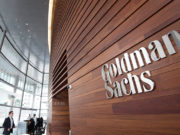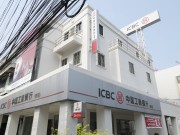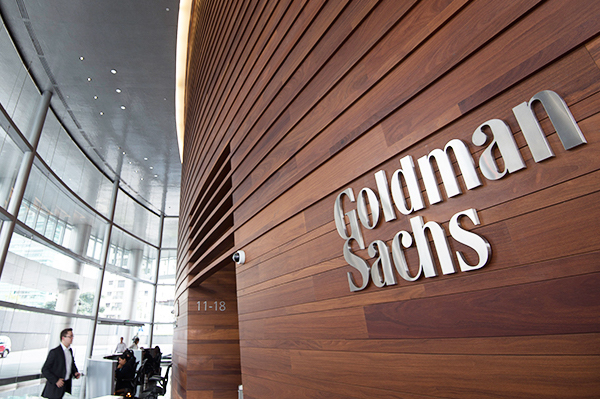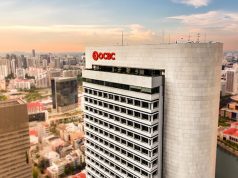Goldman Sachs Family Office Investment Insights Report 2023: 166 Family Offices, 72% of Family Offices with more than $1 Billion
20th May 2023 | Hong Kong
Goldman Sachs has released the Family Office Investment Insights Report 2023, providing key insights into family office investments, asset allocation, alternatives, direct deals and investment management team structure. A total of 166 family offices participated in the report, of which 72% of family offices have a net worth of at least $1 billion. Of the 166 family offices, 49% have an in-house investment team, 44% hybrid and 7% outsource their investment team. The top 3 concerns in the next 1 or 2 years are recession, geopolitics, and inflation. 58% of family offices use leverage in their investing portfolio, and 42% do not use leverage. The top 5 2023 Asset allocation are Equities (28%), Private Equity (26%), Cash Equivalents (12%), Fixed Income (10%), and Real Estate & Infrastructure (9%). The top 5 Sectors allocation (Overweight) are Information Technology, Healthcare, Real Estate, Energy, and Financials. The top 5 Alternative Investments (Direct Allocation) are Private Real Estate, Growth, Venture Capital, Seeding & General Partner (GP) Stakes, and Buyout. The top 5 Alternative Investments (Managers Allocation) are Growth, Buyout, Venture Capital, Secondaries, and Private Credit. For Real Estate, the top 3 allocation increase (next 12 months) are Residential (including multifamily), Industrial, and Hospitality. The top 5 Sustainable Investments focus are Clean energy, Sustainable food & agriculture, Accessible & innovative healthcare, Waste & materials, and Accessible & affordable education. 62% of family offices do not invest in Cryptocurrency, 26% invest in Cryptocurrency, 12% do not but may be interested in the future. The top 3 reasons to invest in Digital Assets are Blockchain technology (19%), Portfolio diversification (9%), Use in financial applications / DeFi (8%). The top 5 reasons to invest in Collectibles are Passion (71%), Uncorrelated to portfolio (39%), Trophy (19%), Inflation hedge (10%), Anonymity (6%). 76% of family offices support their operating businesses. The top 5 reasons to sell operating businesses / assets are Attractive valuation, Plan to hold the business in perpetuity (Not selling), Diversification of wealth, Access to liquidity, Succession planning (e.g., retirement from the business). See below for key findings & summary | View report here
“ 166 Family Offices, 72% of Family Offices with more than $1 Billion “
Goldman Sachs Family Office Investment Insights Report 2023

Goldman Sachs has released the Family Office Investment Insights Report 2023, providing key insights into family office investments, asset allocation, alternatives, direct deals and investment management team structure. A total of 166 family offices participated in the report, of which 72% of family offices have a net worth of at least $1 billion.
Family Office Profile:
A) Family Office Net worth
- Less than $500 million – 7%
- $500 million to $1 billion – 20%
- $1 billion to $5 billion – 41%
- $5 billion to $10 billion – 18%
- $10 billion or more – 13%
B) Family Office Profile (Global / APAC)
- The original wealth creator – 48% / 59%
- 2nd generation – 32% / 30%
- 3rd generation – 12% / 8%
- 4th generation or later – 8% / 3%
C) Family Office by Region
- Americas – 57% (95)
- Europe, Middle East & Africa (EMEA) – 21% (34)
- Asia-Pacific (APAC) – 22% (37)
D) Family Office Investment Management Structure
- In-house – 49%
- Hybrid – 44%
- Outsource – 7%
Goldman Sachs Family Office Investment Insights Report 2023
Key Summary:
- Family Office Investment Management Structure – In-house 49%, Hybrid 44%, Outsource 7%
- Next Generation influencing investing strategy – Global 39%, APAC 51%
- Top 3 Concerns in the next 1 or 2 years – Recession, Geopolitics, Inflation
- Family Office using leverage for investing portfolio – 42% do not use leverage, 58% use leverage
- Top 5 2023 Asset allocation – Equities (28%), Private Equity (26%), Cash Equivalents (12%), Fixed Income (10%), Real Estate & Infrastructure (9%)
- Fixed Income Allocation – Treasuries 4%, Investment Grade 4%, High Yield 4%
- Private Equity Allocation – Buyout 11%, Growth 8%, Venture Capital 7%
- Top 5 Asset Allocation increase (next 12 months) – Equities, Private Equity, Fixed Income, Private Credit, Real Estate & Infrastructure
- Top 3 Geographic Allocation – United States (63%), Developed Markets (21%), China (8%)
- Top 3 Geographic Allocation (APAC Family Offices) – United States (49%), China (27%), Developed Markets (18%)
- Top 5 Sectors Allocation Overweight – Information Technology, Healthcare, Real Estate, Energy, Financials
- Top 5 Alternative Investments (Direct Allocation) – Private Real Estate, Growth, Venture Capital, Seeding & General Partner (GP) Stakes, Buyout
- Top 5 Alternative Investments (Managers Allocation) – Growth, Buyout, Venture Capital, Secondaries, Private Credit
- Top 3 Real Estate Allocation increase (next 12 months) – Residential (including multifamily), Industrial, Hospitality
- Top 3 Family Office Investing in Sustainable Investments – Direct investing into companies, Private market Impact Managers, Diverse managers / diverse-led companies
- Top 5 Sustainable Investments Focus – Clean energy, Sustainable food & agriculture, Accessible & innovative healthcare, Waste & materials, Accessible & affordable education
- Invest in Cryptocurrency – Yes (26%), Not interested (62%)
- Top 3 Reasons to invest in Digital Assets: Blockchain technology (19%), Portfolio diversification (9%), Use in financial applications / DeFi (8%)
- Top 5 Reasons to invest in Collectibles: Passion (71%), Uncorrelated to portfolio (39%), Trophy (19%), Inflation hedge (10%), Anonymity (6%)
- Family offices support operating businesses – Global (76%), APAC (78%), Americas (71%), EMEA (88%)
- Top 5 Reasons to sell operating businesses / assets – Attractive valuation, Plan to hold the business in perpetuity (Not selling), Diversification of wealth, Access to liquidity, Succession planning (e.g., retirement from the business)
- Top 5 Factors to buy operating business / asset / direct deal – Valuation, Cash-flow, Growth trends / disruptive businesses, Current management team go-forward involvement in the business, Stable & value-oriented businesses
Goldman Sachs Family Office Investment Insights Report 2023
1) Next Generation & Insights
Family Next Generation influencing investing strategy (Yes):
- Global – 39%
- APAC – 51%
- Americas – 35%
- EMEA – 38%
Insights:
- A total of 166 family offices participated in the report, and 72% of family offices have a net worth of at least $1 billion.
- The top 3 concerns in the next 1 or 2 years are recession, geopolitics, and inflation.
- 58% of family offices use leverage in their investing portfolio, 42% do not use leverage.
2) Family Office Asset Allocation
Asset allocation 2023 (Global Average):
- Public Market Equities – 28%
- Cash & Cash Equivalents – 12%
- Fixed Income – 10%
- *Private Equity – 26%
- *Real Estate & Infrastructure – 9%
- *Hedge Funds – 6%
- *Private Credit – 3%
- Commodities – 1%
- Other – 4%
* Alternatives – 44%
- Fixed Income: Treasuries 4%, Investment Grade 4%, High Yield 4%
- Private Equity: Buyout 11%, Growth 8%, Venture Capital 7%
Asset allocation 2023 (APAC Family Offices):
- Public Market Equities – 23%
- Cash & Cash Equivalents – 25%
- Fixed Income – 13%
- *Private Equity – 19%
- *Real Estate & Infrastructure – 8%
- *Hedge Funds – 9%
- *Private Credit – 2%
- Commodities – 1%
- Other – 1%
Asset allocation 2021 (Global Average):
- Public Market Equities – 31%
- Cash & Fixed Income – 19%
- *Private Equity – 24%
- *Real Estate – 11%
- *Hedge Funds – 6%
- *Private Credit – 4%
- Commodities – 1%
- Other – 5%
* Alternatives – 45%
Target Asset Allocation in the next 12 months (Increase, Decrease):
- Public Market Equities – 48% increase, 10% decrease
- Cash & Cash Equivalents – 13% increase, 35% decrease
- Fixed Income – 39% increase, 10% decrease
- Private Equity – 41% increase, 13% decrease
- Real Estate & Infrastructure – 27% increase, 7% decrease
- Hedge Funds – 15% increase, 10% decrease
- Private Credit – 30% increase, 6% decrease
- Commodities – 14% increase, 1% decrease
3) Geographic Allocation
Geographic Allocation (Global Average):
- United States – 63%
- Developed Markets – 21%
- China – 8%
- Emerging Markets (Ex-India & China) – 7%
- India – 2%
Geographic Allocation (APAC Family Offices):
- United States – 49%
- China – 27%
- Developed Markets – 18%
- Emerging Markets (Ex-India & China) – 3%
- India – 3%
Target Geographic Allocation (Increase, Decrease):
- United States – 26% increase, 13% decrease
- Developed Markets – 27% increase, 5% decrease
- Emerging Markets (Ex-India & China) – 20% increase, 6% decrease
- China – 14% increase, 14% decrease
- India – 14% increase, 12% decrease
4) Sectors Allocation
Sectors Allocation (Overweight, Neutral):
- Information Technology – 43% Overweight, 27% Neutral
- Healthcare – 34% Overweight, 30% Neutral
- Real Estate – 27% Overweight, 37% Neutral
- Energy – 26% Overweight, 31% Neutral
- Financials – 18% Overweight, 41% Neutral
- Communication Services – 16% Overweight, 41% Neutral
- Consumer Discretionary – 15% Overweight, 50% Neutral
- Consumer Staples – 12% Overweight, 49% Neutral
- Industrials – 11% Overweight, 49% Neutral
- Materials – 10% Overweight, 38% Neutral
- Utilities – 7% Overweight, 36% Neutral
5) Alternative Investments
Alternative Investments Approach – Direct vs Managers (Do not invest):
- Private Real Estate – 54% vs 27% (19%)
- Growth – 33% vs 59% (8%)
- Venture Capital – 30% vs 55% (15%)
- Seeding & General Partner (GP) Stakes – 25% vs 27% (48%)
- Buyout – 25% vs 59% (17%)
- Secondaries – 15% vs 45% (40%)
- Private Credit – 13% vs 51% (36%)
APAC Family Offices Alternative Investments Approach – Direct vs Managers (Do not invest):
- Private Real Estate – 49% vs 38% (14%)
- Growth – 22% vs 76% (3%)
- Venture Capital – 32% vs 59% (9%)
- Seeding & General Partner (GP) Stakes – 22% vs 39% (39%)
- Buyout – 9% vs 65% (26%)
- Secondaries – 17% vs 47% (36%)
- Private Credit – 14% vs 61% (25%)
Target Real Estate allocation in the next 12 months (Increase, Maintain, Not applicable):
- Residential (including multifamily) – 30% increase, 30% maintain, 36% NA
- Industrial – 13% increase, 28% maintain, 54% NA
- Hospitality – 12% increase, 27% maintain, 56% NA
- Office – 7% increase, 35% maintain, 46% NA
- Retail – 4% increase, 28% maintain, 10% NA
6) Sustainable Investments
Family Office Investing in Sustainable Investments:
- Direct investing into companies – 48%
- Private market Impact Managers – 38%
- Diverse managers / diverse-led companies – 24%
- Passive public market strategies – 21%
- Others (Real estate, family foundation) – 11%
Sustainable Investments Focus:
- Clean energy – 60%
- Sustainable food & agriculture – 40%
- Accessible & innovative healthcare – 39%
- Waste & materials – 28%
- Accessible & affordable education – 22%
- Sustainable transport – 20%
- Ecosystem services (carbon, forestland) – 16%
- Community (social mobility, income inequality, housing) – 14%
- Financial inclusion – 8%
- Other (Water, healthcare) – 6%
7) Cryptocurrency & Digital Assets
Invest in Cryptocurrency:
- Yes – 26%
- No but interested in the future – 12%
- No & not interested – 62%
Why invest in Digital Assets:
- Not Applicable – 68%
- Blockchain technology – 19%
- Portfolio diversification – 9%
- Use in financial applications / DeFi – 8%
- Cryptocurrency as a store of value – 8%
- Speculation – 8%
- Use in consumer applications (e.g., Web3, Metaverse, gaming) – 6%
- Other – 1%
8) Collectibles
Why invest in Collectibles:
- Passion – 71%
- Uncorrelated to portfolio – 39%
- Trophy – 19%
- Inflation hedge – 10%
- Anonymity – 6%
- Potential tax savings – 3%
- Other (philanthropy) – 5%
- Not applicable – 6%
9) Operating Business
Family offices support operating businesses:
- Global – 76%
- APAC – 78%
- Americas – 71%
- EMEA – 88%
Key Reasons to consider selling operating businesses / assets:
- Attractive valuation – 56%
- Not applicable / plan to hold the business in perpetuity (Not selling) – 35%
- Diversification of wealth – 29%
- Access to liquidity – 27%
- Succession planning (e.g., retirement from the business) – 18%
- Find a partner to scale business / growth potential – 15%
- Tax purposes (e.g., anticipated changes in tax policy) – 7%
- Partner alignment – 5%
10) Direct Deals, Acquisition
Key Factors to buy operating business / asset / direct deal:
- Valuation – 49%
- Cash-flow – 41%
- Secular growth trends / disruptive businesses – 33%
- Current management team go-forward involvement in the business – 22%
- Stable, value-oriented businesses – 21%
- Family office’s sector expertise – 20%
- Not applicable – 18%
- Downside protection – 16%
- Current management team – 17%
- Strategic synergies with your family office’s other portfolio assets – 10%
- Current capital structure – 8%
- Margin profile – 6%
- Other (personal interests, tax) – 2%
Methodology – Survey responses were collected from January 17 to February 13, 2023, via an online quantitative survey distributed to family offices by email. The target audience for this survey was key decision makers at family offices that have an institutional structure, including a professional investment staff.
About Goldman Sachs
The Goldman Sachs Group, Inc. is a leading global financial institution that delivers a broad range of financial services across investment banking, securities, investment management, and consumer banking to a large and diversified client base that includes corporations, financial institutions, governments, and individuals. Founded in 1869, the firm is headquartered in New York and maintains offices in all major financial centers around the world.
Sign Up / Register
Caproasia Users
- Manage $20 million to $3 billion of assets
- Invest $3 million to $300 million
- Advise institutions, billionaires, UHNWs & HNWs
Caproasia Platforms | 11,000 Investors & Advisors
- Caproasia.com
- Caproasia Access
- Caproasia Events
- The Financial Centre | Find Services
- Membership
- Family Office Circle
- Professional Investor Circle
- Investor Relations Network
Monthly Roundtable & Networking
Family Office Programs
The 2025 Investment Day
- March - Hong Kong
- March - Singapore
- July - Hong Kong
- July - Singapore
- Sept- Hong Kong
- Sept - Singapore
- Oct- Hong Kong
- Nov - Singapore
- Visit: The Investment Day | Register: Click here
Caproasia Summits
- The Institutional Investor Summit
- The Investment / Alternatives Summit
- The Private Wealth Summit
- The Family Office Summit
- The CEO & Entrepreneur Summit
- The Capital Markets Summit
- The ESG / Sustainable Investment Summit










































